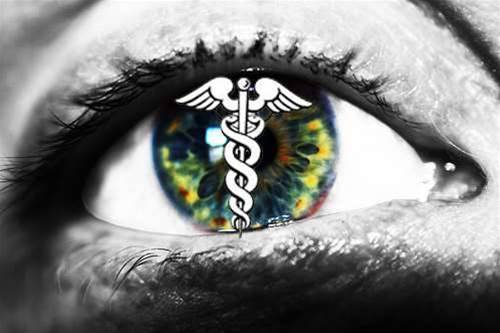The CSIRO is kitting out the homes of sick elderly Australians with sensors and monitors to replace unloved wearable devices in order to better monitor their health and intervene as or before problems occur.

The scientific research agency has been working in the health tech space for around a decade. One of the recent problems it has been looking to solve is usability issues with wearable health devices given Australia's rapidly ageing population.
Older Australians can access smart devices like panic buttons and alarms, but when CSIRO staff visit senior citizens' houses the devices are often on the "kitchen windowsill or the hanging on a hook on the back of the bedroom door," CSIRO principal research scientist Jill Freyne told the CeBIT conference earlier this week.
As a potential alternative to wearables, the research agency has been conducting trials on connected homes that are wired up with a range of sensors and monitoring equipment.
“[We’re looking at] how can we use sensors that don't cost the Earth, put them together in a secure and constructive platform, and then look at the data that comes from these sensors to get a holistic picture of what happens in that home,” Freyne said.
The setup
The most important aspect of the CSIRO’s smart home platform is a series of sensors embedded around the patient’s home. While these require internet access, the stability of connection is more important than the amount of bandwidth.
“We use motion sensors as you would find in most of the security systems that sit in a corner of a room, power metres to look at power consumption and patterns of behaviour, [and] acoustic sensors,” Freyne said.
“[We also put] reed switches both in the bedroom to see the changes of clothes and things like that, and also some on the fridge and kitchen cupboards just to look at daily patterns.
“We’ve deliberately used sensors in the kitchen, which inform us about eating habits – the use of the fridge, the use of equipment in the kitchen, and even reed switches on the cupboards – so we can get a picture of the typical activities that someone has in their house.”
Patients are also provided with a range of connected non-wearable health sensors, such as scales and blood pressure monitors, which feed data into the smart home platform.
“People found great novelty in the health sensors we gave them and they started monitoring their blood pressure – fewer monitored their glucose because that required a finger prick – their temperature, their weight, their heart rate,” Freyne said.
“Many got quite involved in understanding their current state of health, and then would go to the GP and say ‘my blood pressure is quite erratic this week. Do we need to talk? Is there something I should be doing?’ So it was quite empowering for them.”
Using off-the-shelf sensors has meant the agency has been able to minimise the cost of the setup.
"[The cost is] less than $3000, including the iPad [for residents to access their smart home data], so it’s not a heavy cost in terms of infrastructure in the home. And when you consider the cost of residential aged care or a night in hospital, it’s very competitive,” Freyne said.
The privacy issue
Aside from providing the data to the patients themselves, the connected home data is potentially highly valuable for family members, carers and aged care providers. For this reason, the researchers created an online portal where external caregivers can access the data.
However, given the amount of information being collected about patients, there are significant privacy concerns that need to be addressed. Taking this into consideration, the researchers decided to make patient control over data access a cornerstone of their platform.
“[When we] offered to share the data with family members or carers .. we found mixed reactions to this, and this required that our system allowed an individual to tailor what they shared with whom," Freyne said.
“There was many a comment along the lines of ‘that's okay for my daughter to see, but my daughter-in-law isn't getting her hands on my data'. Those were the kinds of conversations we’ve had, and the kind of technology we’ve built in.”
Added extras
The researchers also found patients wanted features that weren't necessary for the underlying platform to function, or even related to their health.
They requested things like the ability to monitor who was at the door, the integration of video conferencing, as well as alerts when they forgot to turn off a tap or an appliance.
“They would brush their teeth, put their toothbrush down, and walk away. And they wouldn’t hear the taps running because their hearing wasn’t great," Freyne said.
“They said ‘if after two minutes my tap’s still running, can my iPad tell me that I’ve done that?’ The same[was asked] for the oven and some other appliances around the house.”
Worst case scenario
Freyne was frank in describing the most confronting aspect of developing a connected home monitoring system, which was the need to collect data from patients who had health incidents in order to train the system to recognise what the danger signs are.
“The unfortunate thing about smart home data and alerts is that you have to see incidents in order to teach the algorithms and to train them. As a researcher, the first time you see an incident you feel a little bit shocked by it, and then you realise this is how the world goes,” Freyne said.
“We feel that the data that was collected [in a house where a patient died] are pieces of a puzzle that provide a rich information set that could be used, at minimum, to allow a patient to be found earlier.”
An upshot about such situations is that the data can, in some cases, provide comfort to distressed relatives.
“One family feared that their relative could have been left at home on their own for up to five days, and we were able to look at the data tell them, ‘no, it happened on this night she was found’, and were able to provide some relief from that perspective,” Freyne said.
“But the major relief would have been if that incident hadn’t happened at all, and if in that [period beforehand] when the data was changing, someone had’ve gone [into the patient’s house].".



_(5).jpg&h=140&w=231&c=1&s=0)
.png&h=140&w=231&c=1&s=0)




.png&w=100&c=1&s=0)

 iTnews Benchmark Security Awards 2025
iTnews Benchmark Security Awards 2025
 Digital Leadership Day Federal
Digital Leadership Day Federal
 Government Cyber Security Showcase Federal
Government Cyber Security Showcase Federal
 Government Innovation Showcase Federal
Government Innovation Showcase Federal
 Digital NSW 2025 Showcase
Digital NSW 2025 Showcase












_(1).jpg&h=140&w=231&c=1&s=0)



